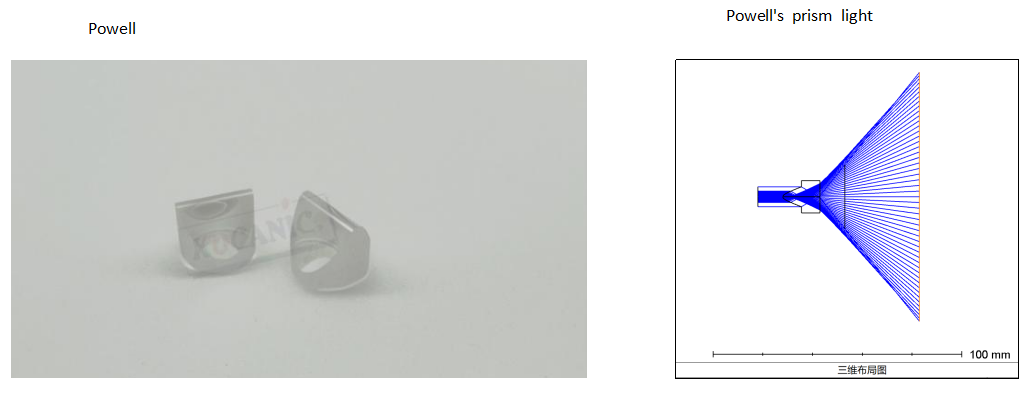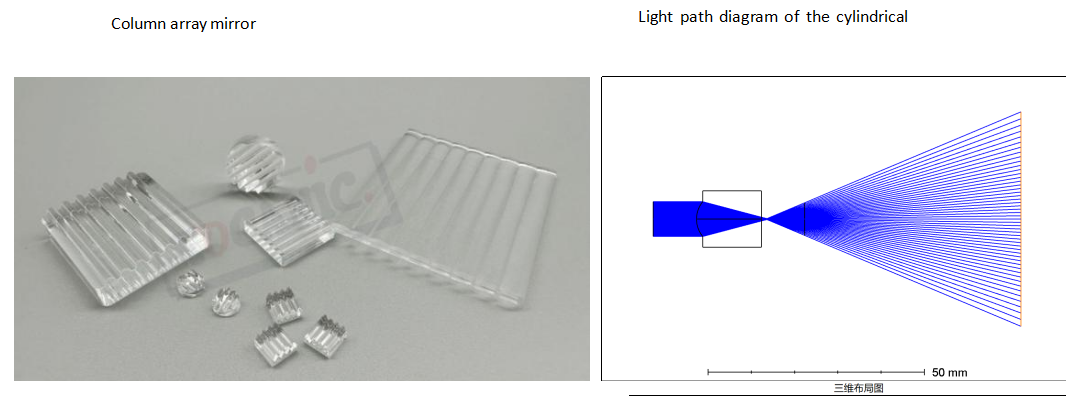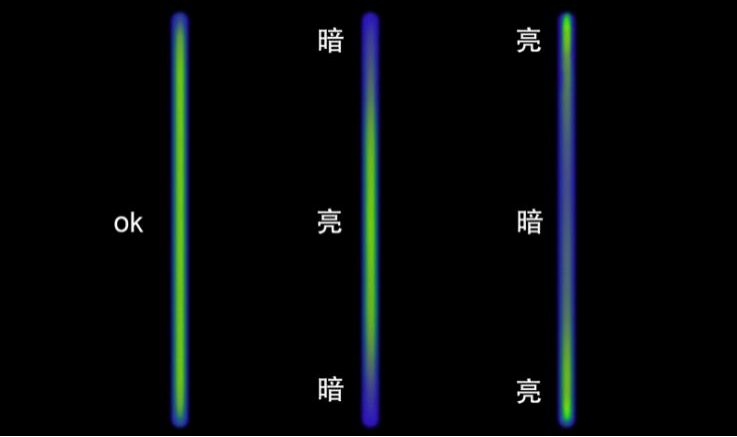The difference between the Powell prism and the cylindrical array mirror
Release time:
2024-03-06 09:49
Source:
Brief introduction
Powell prism: It is an optical nonspherical cylindrical mirror that allows the laser beam to preferably form a straight line with uniform density.
Cylinder array mirror: Cylinder array mirror belongs to a kind of lens array. The core is the cylindrical microstructure distributed above, which can effectively reduce the spherical difference and chromatic difference by designing the aspherical surface shape, and has a one-dimensional amplification function.


Effect comparison of Powell prism and cylindrical array mirror

Imaging ratio of Powell prism to cylindrical array mirror
For the linear laser generated by Powell's prism, if the incident spot does not match, it will be bright or dark at both ends. For example, the diameter of the incident spot of Powell prism is 2mm. If the actual diameter of the incident light is 2.1 mm, there will be dark at both ends. If the actual incident spot is 1.9mm, there will be bright at both ends, and the greater the deviation, the greater the degree of nonuniformity. As shown in the figure below, the difference between the direct spot and the incident spot is 0.1mm. The spot effect is different and the spot is significantly different. The reason is related to whether the design parameters of Powell prism match the size and Angle of the incident spot. Therefore, it can be seen that Powell prism has high matching requirements between the light design parameters and the incident spot parameters, and the uniform light has limitations.

Comparison of Powell prism spot effect
The cylindrical array mirror has a one-dimensional amplification function, which is usually used to change the shape of the light source in the optical system as a linear light source, and can also be used to correct the astigmatism in the system and change the imaging size. For example, convert a spot spot into a line spot, or change the size of the X and Y axes of

A rendering of the cylindrical array mirro
Application of Powell prism with cylindrical array
Powell prism is suitable for a variety of biomedical, automotive assembly, food processing and other machine vision applications. Cylinder array mirror is widely used in high-precision tester and high-power laser, long-distance line interferometer, linear detector lighting, bar code scanning, holographic illumination, optical information processing, computer and so on.
Previous Page
Recommended Articles
透镜,让世界更美好
2 minutes to understand the principle of the microstructure array lens
Microstructure array lenses are formed by nanoscale sub-lenses arranged in a certain order. Since each sublens in the microstructure array lens has an independent optical axis, a main optical axis is formed. Therefore, compared with the traditional compound eye single lens, the microstructure array lens has extremely high parallelism, and each sub-lens can transmit the light source independently of each other without interfering with each other.
What do you know about a spherical lens?
A spherical lens is a lens with a fixed radius of curvature on the surface of the lens inside the optical aperture. Spherical lenses are mainly divided into double convex lens, flat and concave lens, concave and convex lens, double concave lens, etc., which can be customized according to customer drawings or sample processing, to meet the different application needs of customers.
The difference between the Powell prism and the cylindrical array mirror
Powell prism: It is an optical nonspherical cylindrical mirror that allows the laser beam to preferably form a straight line with uniform density. Cylinder array mirror: Cylinder array mirror belongs to a kind of lens array. The core is the cylindrical microstructure distributed above, which can effectively reduce the spherical difference and chromatic difference by designing the aspherical surface shape, and has a one-dimensional amplification function.







